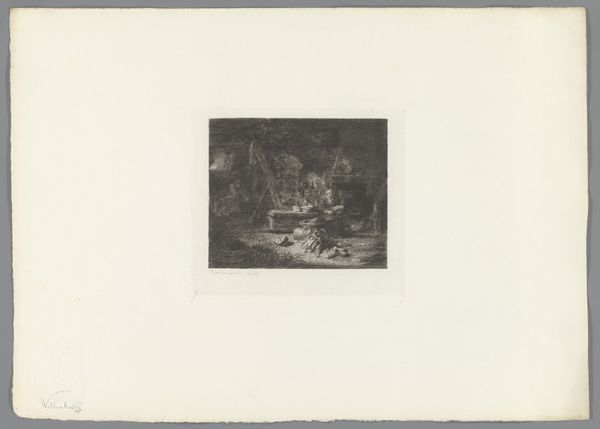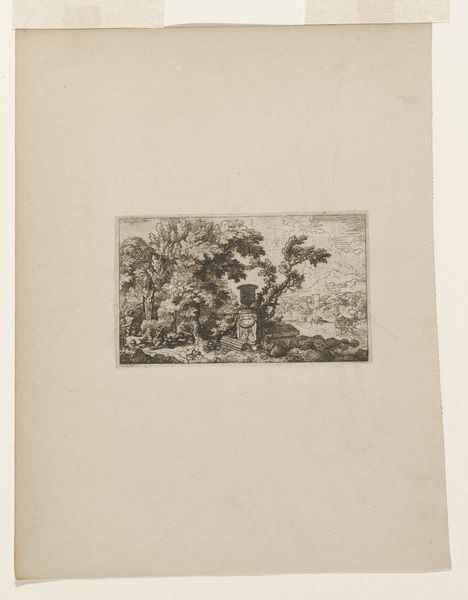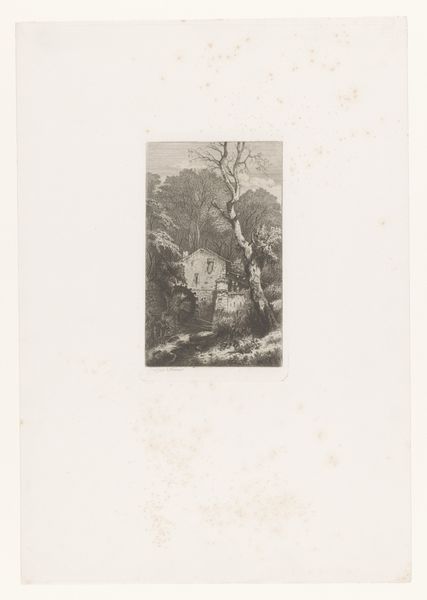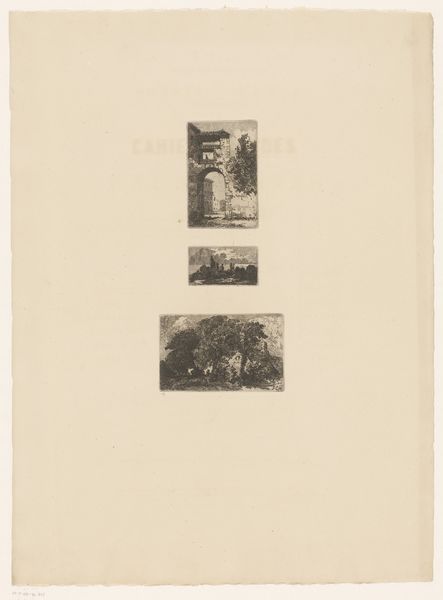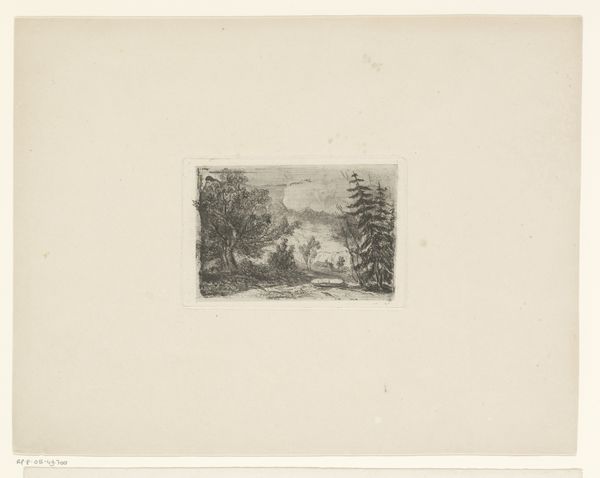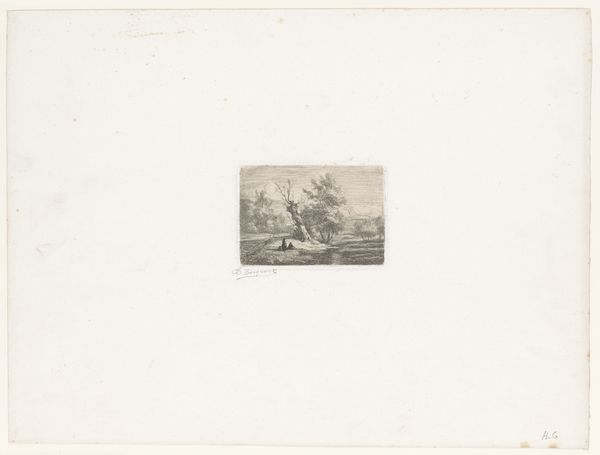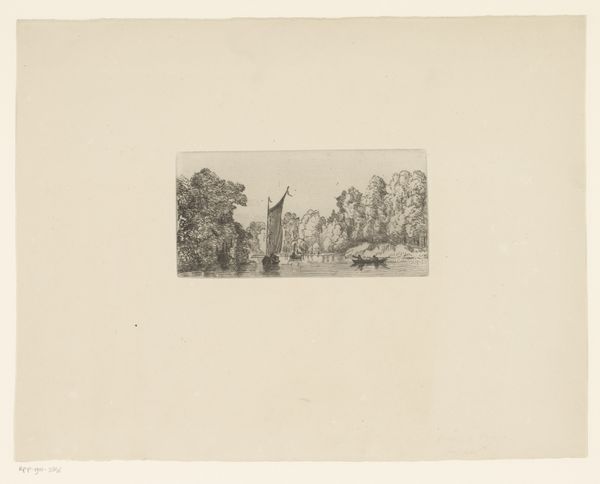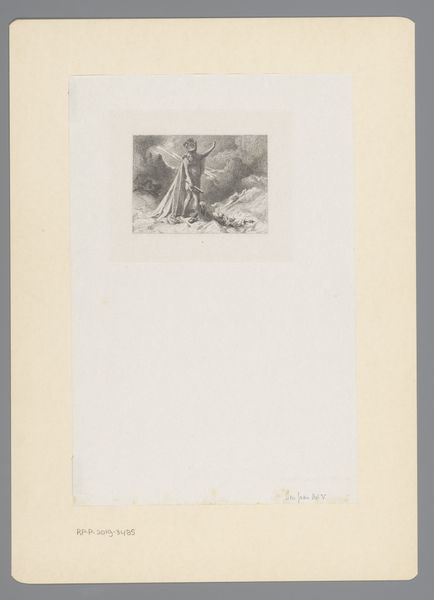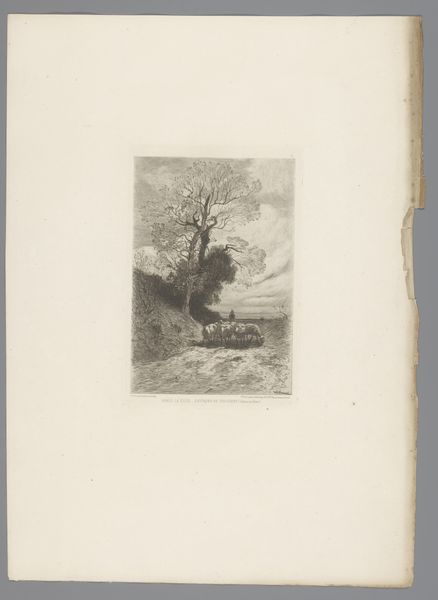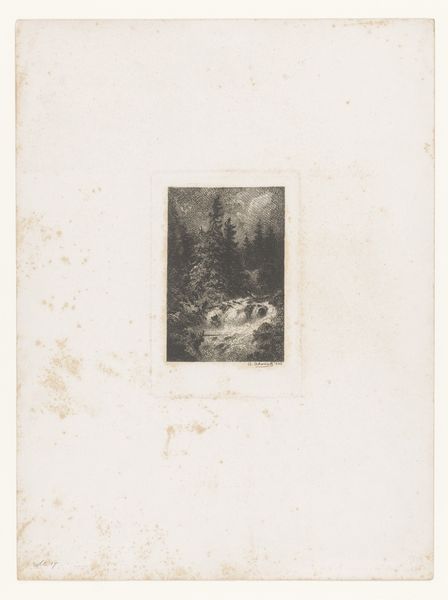
print, etching
etching
landscape
genre-painting
realism
Dimensions: height 199 mm, width 150 mm
Copyright: Rijks Museum: Open Domain
Jules Ferdinand Jacquemart made this landscape with herdersgezin en vee, or "Landscape with Shepherd Family and Cattle," through etching, a printmaking technique that relies on acid to bite lines into a metal plate. The image is created by covering a metal plate with a waxy, acid-resistant substance. The artist then scratches an image into the wax, exposing the metal. When the plate is dipped in acid, the exposed lines are eaten away, creating grooves. These grooves hold ink, which is then transferred to paper under high pressure. The beauty of etching lies in its capacity for fine detail and tonal variation. The depth and width of the etched lines determine the amount of ink they hold, and the darkness of the printed line. Jacquemart has used this to full effect here, creating a rich range of blacks, greys, and whites. This printmaking process democratized art production because many identical copies could be made and widely distributed. Understanding the material and process allows us to see the skill and labor involved in creating the artwork. It also reminds us that the artwork is not just an image, but a physical object with its own history and materiality.
Comments
No comments
Be the first to comment and join the conversation on the ultimate creative platform.
